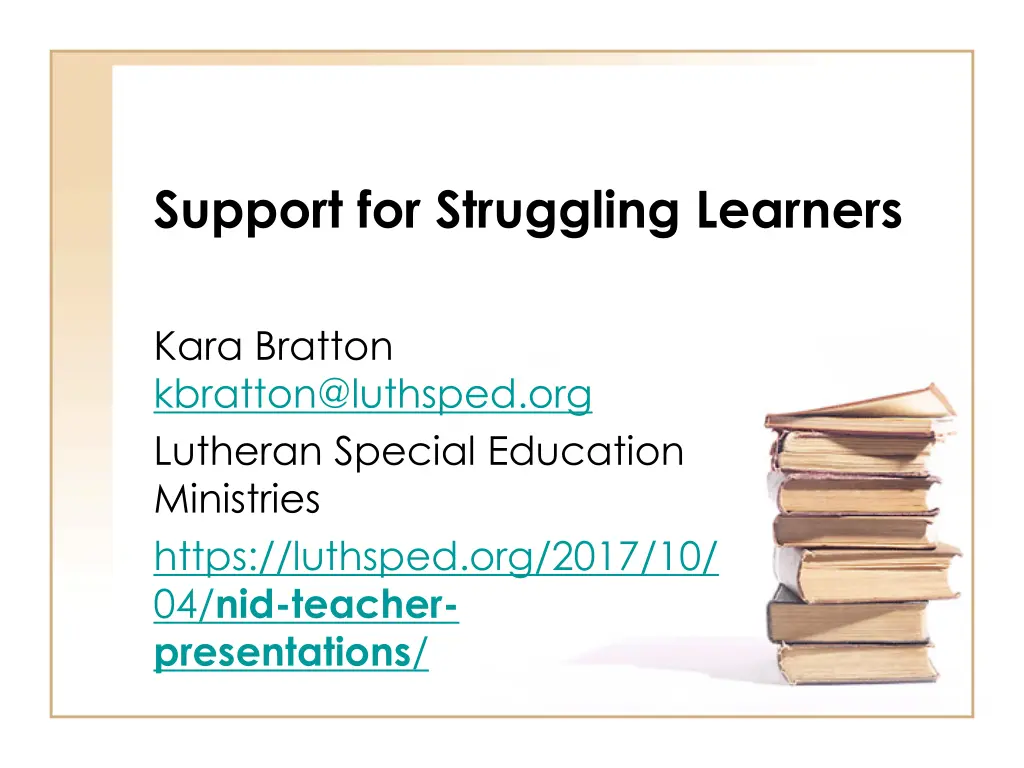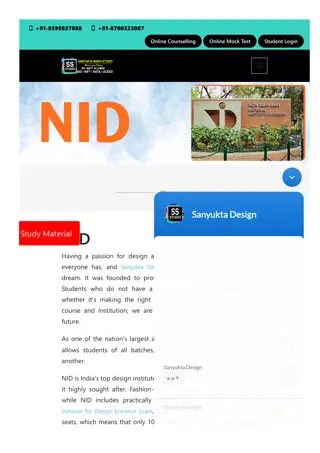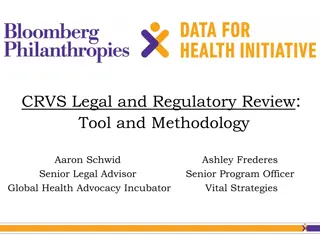
Effective Strategies for Struggling Learners in Education
Discover effective strategies for supporting struggling learners in education, including reading instruction, lesson planning, and engaging instruction techniques. Learn how to provide targeted support to help all learners succeed.
Download Presentation

Please find below an Image/Link to download the presentation.
The content on the website is provided AS IS for your information and personal use only. It may not be sold, licensed, or shared on other websites without obtaining consent from the author. If you encounter any issues during the download, it is possible that the publisher has removed the file from their server.
You are allowed to download the files provided on this website for personal or commercial use, subject to the condition that they are used lawfully. All files are the property of their respective owners.
The content on the website is provided AS IS for your information and personal use only. It may not be sold, licensed, or shared on other websites without obtaining consent from the author.
E N D
Presentation Transcript
Support for Struggling Learners Kara Bratton kbratton@luthsped.org Lutheran Special Education Ministries https://luthsped.org/2017/10/ 04/nid-teacher- presentations/
Effective Reading Instruction Teach same fundamental reading skills that all readers need, but with: More instructional time More precisely sequences instruction More coaching and practice More explicit/direct instruction More careful progress monitoring/program adjustment
Effective Lessons for All Learners: Beginning Review Review homework Review prerequisite skills and knowledge needed State goal of the lesson and post it visually Begin teaching new materials in small steps Model all procedures Gives examples AND nonexamples Check for understanding frequently
Effective Lessons for All Learners: Middle More guided practice Asks lots of questions Require that all students respond and give feedback Continue with this until all students are fluent in new skill Provide feedback so students don t practice incorrectly
Effective Lessons for All Learners: End Independent practice Give overview and helps with steps Active supervision Review
Explicit Engaging Instruction Teacher does it: Gain their attention and model Cue students to notice critical aspects Model your thinking step by step out loud Teacher AND student do it: Provide thinking time Structure/prompt engagement Choral response for short answers Partner response for longer answers Correction/feedback
Explicit Engaging Instruction You do it: Struggling learners need: Individual responses; oral, written, point, touch, demonstrate Coaching to apply strategy being taught
What Works for Struggling Students More time (preview, review, elaborate) More intensity (smaller groups, more responding/engaging) More feedback (dial in to needs, prompt, alternate examples)
PALS Reading for Comprehension Stronger reader reads a paragraph Weaker reader prompts to: Name the Who or What Tell the most important thing(s) about the Who or What Paraphrase in 10 words or less Switch roles after 5 minutes with new part of text
Reading: Strategies Present information in smaller amounts Use lower level reading materials or recorded texts Bookshare.org Allow students to dictate responses Dragon Dictation App, Paper port app Tests and other classwork read to student VoxDox app, Snap Type app Incorporate hands-on learning and alternative assignments/assessments Provide notes and study guides
Reading: Strategies Finger Tapping for Spelling Sound Cards & Blending
Reading: Strategies Syllabification The Fantastic Syllable Division Word Book (orton-gillingham.com) Red words/Non-phonetic words (see Red Words handout)
Reading: Strategies Auditory Practice Teach and practice morphemes
Math: Strategies Subitizing Subitizing is the ability to recognize the number of briefly presented items without actually counting. https://www.youtube.com/w atch?v=nLsIrNXxZWo Number Sense
Reading and Math Resources Florida Center for Reading Research Student Center Activities: Reading http://www.fcrr.org/for-educators/sca.asp National Council of Teachers of Mathematics: Focal Points Activities http://illuminations.nctm.org/Default.aspx Reading Rockets http://www.readingrockets.org/guides/other http://www.readingrockets.org/guides/readingrocket s http://www.intensiveintervention.org/sample- lessons-activities http://www.doe.virginia.gov/instruction/mathemat ics/elementary/number_sense_module/nns_modul es_2012.pdf Chris Woodin Math: https://sites.google.com/a/woodinmath.com/mai n/home Teach4Mastery Math: https://teach4mastery.com
Reading and Math Resources Bob Sornson Early Learning Foundation http://earlylearningfoundatio n.com/publications/ Essential Skill Inventories The Math MOMS & DADs Home Program Hawthorne Intervention Manuals- https://www.hawthorne- ed.com/pages/home%20page/int erventionmanuals.html
Working Memory Working memory difficulties common in students with learning disabilities and ADHD Working memory is the ability to hold AND manipulate information over short periods of time
Working Memory Average adults can only hold 6- 7 units of information in working memory (units may be comprised of individual elements grouped together) Typical 4 year olds may hold 2 units of information in working memory Typical 15 years old may hold 4- 5 units of information in working memory
Working Memory Minimize background noise involving language Rehearse contents of working memory for retention Use visuals and memory aids but also teach students where to locate information and how to use Reduce working memory loads and repeat important information Once information is lost from working memory, it s GONE and can not be recovered Resource: Working Memory & Learning: A Practical Guide for Teachers by Susan E. Gathercole & Tracy Packiam Alloway
Fearfully & Wonderfully Made Psalm 139:13-14 (NIV) is a wonderful passage to use to help students see that each of them was created uniquely by God, and while school may provide different challenges for some of them, they are appreciated and loved by their creator. 13 For you created my inmost being; you knit me together in my mother s womb. 14 I praise you because I am fearfully and wonderfully made; your works are wonderful, I know that full well.
Accommodations The goal is to provide accommodations that will support individual differences while still maintaining a demanding academic environment for all students. Not intended to reduce expectations. Students without disabilities do not benefit from accommodations like students with disabilities.
Accommodations The student receiving accommodations is not gaining any advantage over the other students, much like an individual who needs glasses to see does have any advantage over someone who does not need glasses to have 20/20 vision. Students who struggle will still continue to struggle, even with accommodations. Accommodations attempt to level the playing field to give all students opportunities to learn.
Accommodations Accommodations are practices and procedures designed to ensure that educators, as well as students and parents, have a valid measure of what a student with a disability knows and can do. An instructional accommodation is to be selected, designed, and evaluated by the student s teachers based upon the student s characteristics as a learner. A sound decision about a student's need for accommodations considers the student's preferences and needs in combination with the tasks required during assessment. The goal is to find the right balance which gives a student access to instruction and assessment without diluting the content or expected outcomes. Effectiveness of an accommodation is dependent upon the student's proficiency with its use, which improves through regular practice in everyday life.
Choosing Accommodations What instructional and assessment tasks are difficult for the student to do independently? Are these difficulties documented in the present level statement? Why are these tasks difficult for the student? What accommodations will allow the student to access the information and demonstrate performance of the tasks? Evaluate the effectiveness of the accommodations.
Choosing Accommodations The use of more accommodations is not necessarily better. Providing students with a laundry list of accommodations that are not truly needed, or that have not been evaluated and determined to be effective, may actually have a negative impact on performance. The better approach is to focus on a student s identified needs within the general education curriculum when choosing accommodations. It is then the educators responsibility to implement the accommodation with fidelity and evaluate its effectiveness in both instruction and assessment.
Choosing Accommodations After accommodations are selected, consider: o The student s willingness to use the accommodation consistently o How frequently the student will have an opportunity to use the accommodation o Conditions for use on state assessments An accommodation should not be dismissed for use as an instructional accommodation based solely on the fact that the accommodation is not allowable on a state assessment.
Purpose of Instructional Accommodations Accommodations are based on individual student documented need and used routinely in instruction with sufficient frequency to ensure familiarity and independent use designed to give students equitable access to the general curriculum during instruction and assessment to be used for students to produce their own work independently and demonstrate learning documented in a plan Accommodations are NOT to be provided solely for convenience intended to give educational advantage used to reduce learning expectations or replace instruction intended to help all students do better to be continued without evidence of effectiveness
Autism: Characteristics Difficulty relating to peers/social skills Unusual play with toys and other objects Obsessive about area of interest (trains, vacuums, etc.) Difficulty with changes in routine or surroundings Repetitive body movements, behaviors and language Difficulty using and understanding language/communication
Autism: Early Signs The characteristic behaviors of autism spectrum disorder may be apparent in infancy (18 to 24 months), but they usually become clearer during early childhood (24 months to 6 years) Most obvious signs of autism and symptoms of autism tend to emerge between 2 and 3 years of age Any of these red flags does not mean a child has autism. But because the disorder s symptoms vary so widely, a child showing these behaviors should be evaluated by a multidisciplinary team Under the DSM-5 criteria, individuals with ASD must show symptoms from early childhood, even if those symptoms are not recognized until later
Autism: Early Signs No big smiles or other warm, joyful expressions by six months or thereafter No back-and-forth sharing of sounds, smiles, or other facial expressions by nine months or thereafter No babbling by 12 months No gesturing (pointing, waving bye- bye) by 12 months No words by 16 months No two-word meaningful phrases (without imitating or repeating) by 24 months Any loss of speech or babbling or social skills at any age
Autism: Early Signs Doesn t make eye contact (e.g. look at you when being fed). Doesn t smile when smiled at. Doesn t respond to his or her name or to the sound of a familiar voice. Doesn t follow objects visually. Doesn t point or wave goodbye or use other gestures to communicate. Doesn t follow the gesture when you point things out.
Autism: Early Signs Doesn t make noises to get your attention. Doesn t initiate or respond to cuddling. Doesn t imitate your movements and facial expressions. Doesn t reach out to be picked up. Doesn t play with other people or share interest and enjoyment. Doesn t ask for help or make other basic requests.
Risk Indicators for Preschoolers A history of significant language delay or disorder, even if the child currently appears to have age- appropriate language abilities Limited exposure to oral and written language before beginning school A native language other than English A disability that affects oral language acquisition, such as a hearing impairment A significant history of reading difficulties in close family members Oral language difficulties (poor vocabulary, listening comprehension, or grammatical abilities for the child s age)
Risk Indicators for Children in Kindergarten and First Grade Poor phonological/phonemic awareness (inability to rhyme, identify initial and final sounds of spoken words, or to blend and segment one-syllable spoken words) Lack of familiarity with basic print concepts such as (1) print conveys meaning, (2) print is read left to right, and (3) words are separated by spaces Poor knowledge of common letter-sound relationships Difficulty decoding unfamiliar words at the middle or end of first grade, especially as measured by reading of nonsense words such as zat
Risk Indicators for Children in Second and Third Grade Ongoing difficulties with decoding of unfamiliar words Slow, labored, dysfluent reading in grade- appropriate text Poor reading comprehension Poor spelling
Signs of Math Difficulties Warning Signs in Preschool or Kindergarten Has trouble learning to count, especially when it comes to assigning each object in a group a number Has trouble recognizing number symbols, such as making the connection between 7 and the word seven Struggles to connect a number to a real-life situation, such as knowing that 3 can apply to any group that has three things in it 3 cookies, 3 cars, 3 kids, etc. Has trouble remembering numbers, and skips numbers long after kids the same age can count numbers and remember them in the right order Finds it hard to recognize patterns and sort items by size, shape or color Avoids playing popular games like Candy Land that involve numbers, counting and other math concepts
Signs of Math Difficulties Warning Signs in Grade School Has trouble recognizing numbers and symbols Has difficulty learning and recalling basic math facts, such as 2 + 4 = 6 Struggles to identify +, and other signs and use them correctly May still use fingers to count instead of using more sophisticated strategies Has trouble writing numerals clearly or putting them in the correct column
Signs of Math Difficulties Has trouble coming up with a plan to solve a math problem Struggles to understand words related to math, such as greater than and less than Has trouble telling his left from his right, and has a poor sense of direction Has difficulty remembering phone numbers and game scores Avoids playing games like Risk that involve number strategy Has trouble telling time
Indicators of Learning Disabilities Preschool Speaks later than most children Pronunciation problems Slow vocabulary growth, often unable to find the right word Difficulty rhyming words Trouble learning numbers, alphabet, days of the week, colors, shapes Extremely restless and easily distracted Trouble interacting with peers Difficulty following directions or routines Fine motor skills slow to develop
Indicators of Learning Disabilities Grades K-4 Slow to learn the connection between letters and sounds Confuses basic words (run, eat, want) Makes consistent reading and spelling errors including letter reversals (b/d), inversions (m/w), transpositions (felt/left), and substitutions (house/home) Transposes number sequences and confuses arithmetic signs (+, -, x, /, =) Slow to remember facts Slow to learn new skills, relies heavily on memorization Impulsive, difficulty planning Unstable pencil grip Trouble learning about time Poor coordination, unaware of physical surroundings, prone to accidents
Indicators of Learning Disabilities Grades 5-8 Reverses letter sequences (soiled/solid, left/felt) Slow to learn prefixes, suffixes, root words, and other spelling strategies Avoids reading aloud Trouble with word problems Difficulty with handwriting Awkward, fist-like, or tight pencil grip Avoids writing assignments Slow or poor recall of facts Difficulty making friends Trouble understanding body language and facial expressions
Indicators of Learning Disabilities High School Students and Adults Continues to spell incorrectly, frequently spells the same word differently in a single piece of writing Avoids reading and writing tasks Trouble summarizing Trouble with open-ended questions on tests Weak memory skills Difficulty adjusting to new settings Works slowly Poor grasp of abstract concepts Either pays too little attention to details or focuses on them too much Misreads information
Indicators of ADD/ADHD Some signs of hyperactivity- impulsivity are: Feeling restless, often fidgeting with hands or feet, or squirming while seated Running, climbing, or leaving a seat in situations where sitting or quiet behavior is expected Blurting out answers before hearing the whole question Having difficulty waiting in line or taking turns.
Indicators of ADD/ADHD The DSM-IV-TR gives these signs of inattention: Often becoming easily distracted by irrelevant sights and sounds Often failing to pay attention to details and making careless mistakes Rarely following instructions carefully and completely losing or forgetting things like toys, or pencils, books, and tools needed for a task Often skipping from one uncompleted activity to another.
Indicators of ADD/ADHD Because everyone shows some of these behaviors at times, the diagnosis requires that such behavior be demonstrated to a degree that is inappropriate for the person's age. The diagnostic guidelines also contain specific requirements for determining when the symptoms indicate ADHD. The behaviors must appear early in life, before age 7, and continue for at least 6 months. Above all, the behaviors must create a real handicap in at least two areas of a person's life such as in the schoolroom, on the playground, at home, in the community, or in social settings. So someone who shows some symptoms but whose schoolwork or friendships are not impaired by these behaviors would not be diagnosed with ADHD. Nor would a child who seems overly active on the playground but functions well elsewhere receive an ADHD diagnosis. To assess whether a child has ADHD, specialists consider several critical questions: Are these behaviors excessive, long-term, and pervasive? That is, do they occur more often than in other children the same age? Are they a continuous problem, not just a response to a temporary situation? Do the behaviors occur in several settings or only in one specific place like the playground or in the schoolroom? The person's pattern of behavior is compared against a set of criteria and characteristics of the disorder as listed in the Diagnostic and Statistical Manual of Mental Disorders (DSM-IV-TR.) ldonline.org
Stay in Touch! Luthsped.org Sign up for our free e-newsletters Always available for FREE consultations Available for professional development for schools and churches





